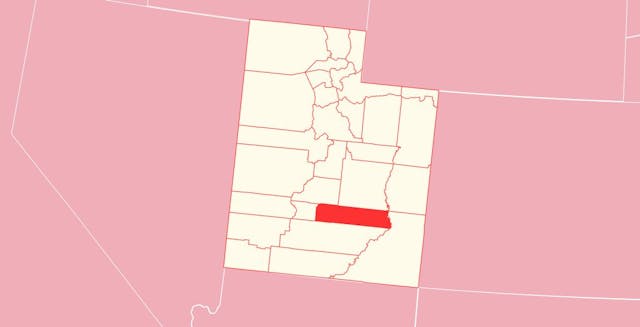Rehabs in Wayne
Wayne County is a small area with a population of only 2,778. Having only 890 households according to the latest census, it is located in the central part of Utah.
It is the fourth-least populated region in the state. Its seat is Loa, a small town named after Mauna Loa in Hawaii. Specifically, a Mormon missionary, a native of Mauna Loa, named the town.
Despite being sparsely populated, the local authorities are concerned about the overdose rate. This article will reveal the ways to overcome addiction and find a suitable option among Wayne County rehabs.
Overdose Issues
Overall, UT is known as a state with bad overdose statistics. Opioids are responsible for 8 out of 10 adult drug deaths here. Unfortunately, small rural areas face this problem as well.
The local healthcare specialists are sparing no effort to fight the problem. Moreover, one of the local universities has launched an initiative to improve prevention and treatment. Their goal is to put an end to opioid addiction in rural Utah.
Carbon, Emery, and Wayne are the regions with the highest rates. Opioid-related deaths here are 2.5 times higher than in other areas of UT. Additionally, it is important to treat co-occurring mental diseases.
The representatives of the initiative say that only 14 centers offer relevant services. Thus, individuals searching for rehab in Wayne County may find facilities dozens of miles away. This is the reason health professionals are working to attract more experts to address this gap.
Substance Abuse Evaluation
The first step is to admit that you cannot overcome it without professionals. Secondly, you have to look for a good facility to undergo an evaluation. It starts with a question-and-answer session. Later on, you may have to pass some urine and blood tests.
The doctors would determine the level of your dependence. You will have to consult a psychiatrist, a psychologist, or a drug counselor. Based on their assessment, it’s time to choose between inpatient and outpatient treatment. However, this is usually preceded by a detoxification program.
Detoxification
In general, a detox program will help you get rid of toxic substances. Withdrawal symptoms might lead to harmful consequences. Thus, it’s better to apply to a certified clinic.
Being under supervision helps to overcome this process safely. Now it is time to select the best facility type.
Types of Rehab Clinics
The clinics offer a wide range of services. However, there are two basic types: inpatient and outpatient.
Inpatient
It’s a model of treatment when the patients reside at the clinic. The average length of stay is 30 days but it also depends on individual cases. The patients have different types of therapies.
The services usually include:
Addiction counseling
Behavioral therapy
Life skills therapy
Family sessions
The advantages are safety, distance from external influence, and support of the community. Most importantly, psychologists offer to involve families in the process. This may also bring better results and open a path to full sobriety.
Outpatient
The outpatient model does not require overnight stays. It can be a good transition for those leaving residential centers. This model also includes group and family therapy, and relapse prevention. The level of intensity and number of sessions are different. Anyway, while providing medical assistance, the experts take specific needs into account.
Local Facilities for Addiction Treatment
Several facilities have different programs:
Legacy
Central Utah Counseling Center
The holistic approach of Legacy is focused on outdoor therapeutic programs. The clinicians use wilderness and adventure experiences as a part of healing.
The Counseling Center offers behavioral healthcare in Loa. The services include medication management, peer support, and family resource facilitation.
Payment Options
Once you decide to overcome the dependence, it’s time to check which options are affordable. However, the cost varies depending on the amenities, location, and other factors.
Insurance agencies cover the costs. On the positive side, many rehabs accept Medicaid/Medicare and private insurance. There is also an option to apply for a grant.
Patients without insurance may benefit from sliding scale fees. The less your income is, the less you would pay for assistance.

